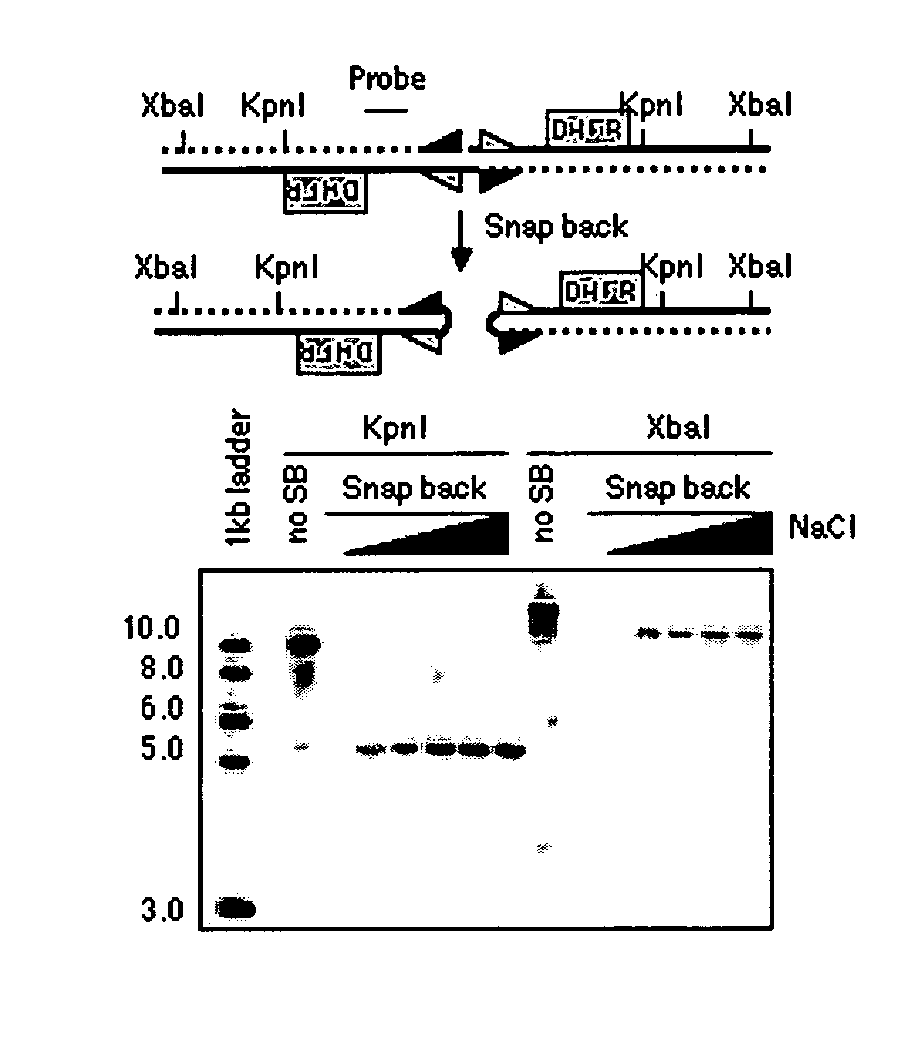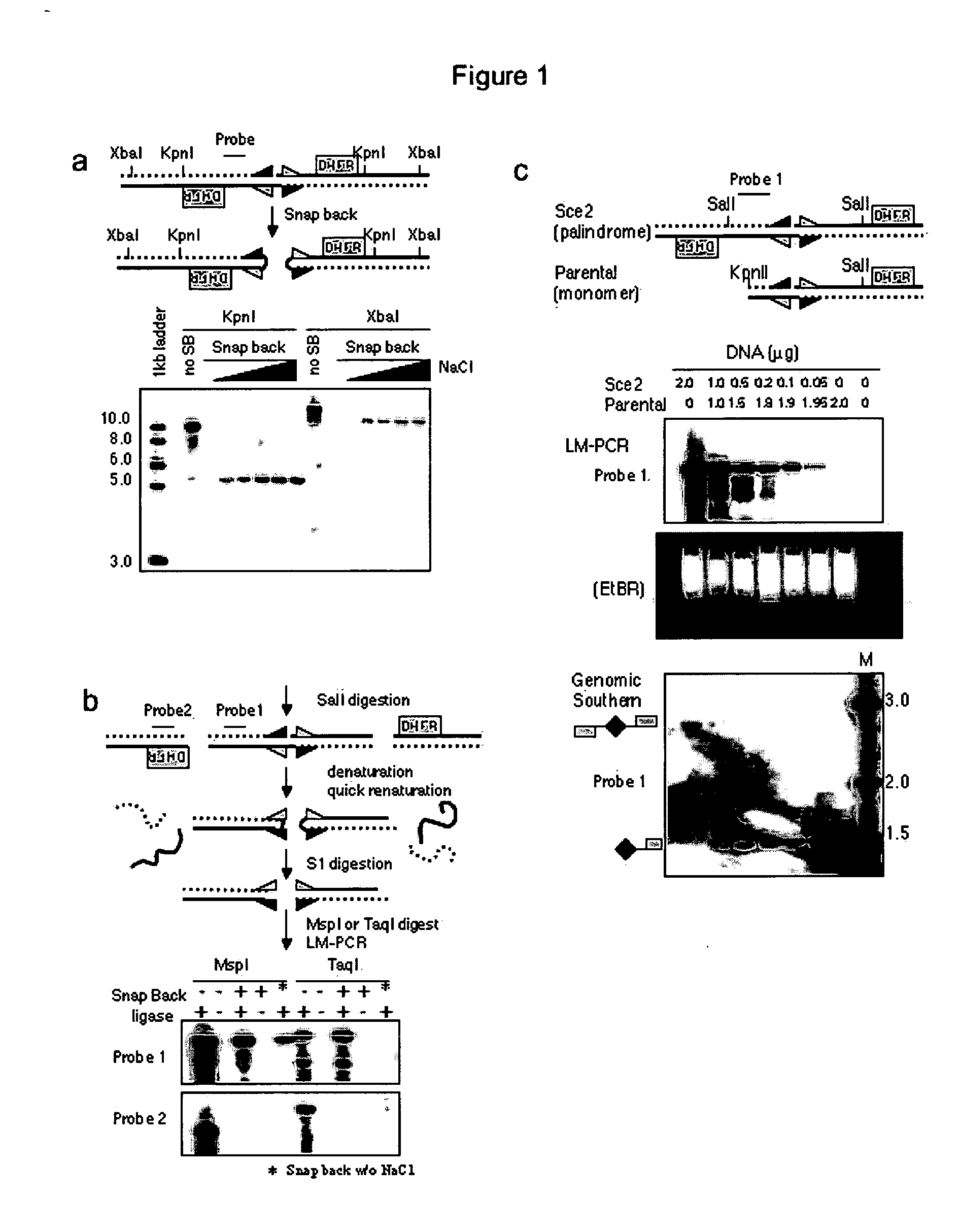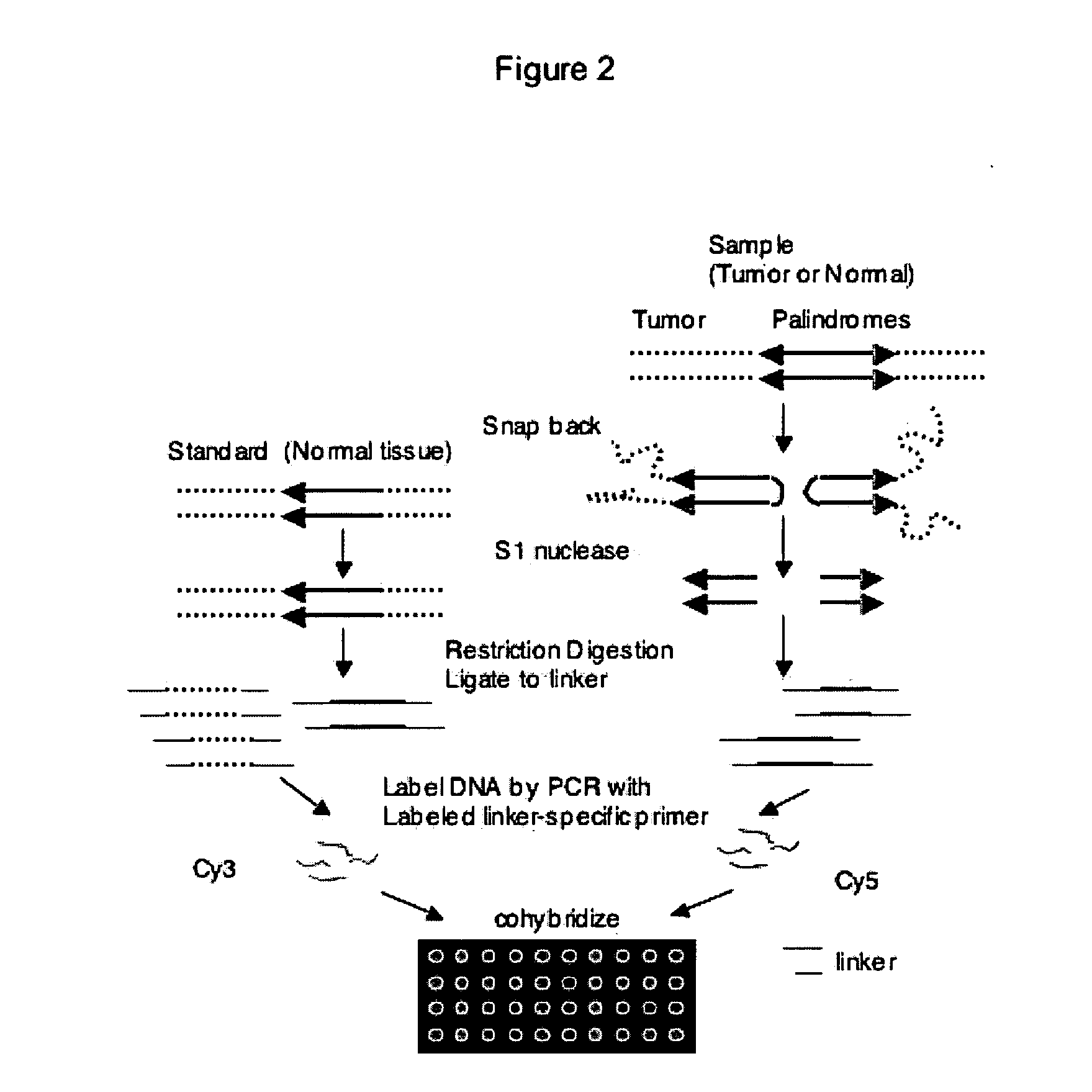Method for genome-wide analysis of palindrome formation and uses thereof
a genome-wide analysis and palindrome technology, applied in the field of genome-wide analysis of palindrome formation, can solve the problems of limited examples, dna preparation, and inability to detect dsb repair,
- Summary
- Abstract
- Description
- Claims
- Application Information
AI Technical Summary
Benefits of technology
Problems solved by technology
Method used
Image
Examples
example 1
[0026] The following example describes the process for genome-wide assessment of palindrome formation.
Methods
[0027] D79IR-8 and D79IR-8-Sce 2 cells were previously described (Tanaka et al., Proc. Natl. Acad. Sci. USA 99:8772-8777 (2002)). Colo320DM and RD were obtained from American Type Culture Collection. MCF7 and AG1113215 were from the University of Washington. Skin biopsy derived fibroblasts HDF1 and HDF3 were obtained from the University of Washington and human foreskin fibroblasts HFF2 from the Fred Hutchinson Cancer Research Center (FHCRC) as anonymous cell lines. DNA samples stripped of identifying information from five primary medulloblastomas were provided by the FHCRC. All samples were obtained after FHCRC Institutional Review Board review and approval for use of anonymous human DNA samples and human cell lines.
Linkers and Oligos
[0028] Oligonucleotides were synthesized by QIAGEN Genomics. For ligation mediated PCR, two oligonucleotide...
example 2
[0049] The following example demonstrates the use of ligation-mediated PCR to isolated a DNA fragment enriched in unmethylated CpG islands in a mammalian cell. A schematic of the process is provided as FIG. 8A. The methods for
[0050] Briefly, mouse genomic DNA was digested with a methylation sensitive restriction enzyme (for example, HpaII). The MspI linkers used above in Example 1 were used to ligate the HpaII fragments. The ligated DNA was amplified by PCR using the MspI primer from Example 1 (SEQ ID NO: 6). The method resulted in the specific amplification of HpaII digested genomic DNA of less than 500 base pairs. (FIG. 8B). Random cloning and sequencing of the PCR products revealed that more than 50% of clones were at the CpG islands as defined using stringent criteria. (Takai and Jones, Proc. Natl. Acad. Sci USA 99:3740-3745 (2002); incorporated herein by reference). In contrast, amplification of DNA digested with methylation-resistant isoschizomer MspI gave no clones near CpG ...
PUM
| Property | Measurement | Unit |
|---|---|---|
| Fraction | aaaaa | aaaaa |
| Fraction | aaaaa | aaaaa |
| Fraction | aaaaa | aaaaa |
Abstract
Description
Claims
Application Information
 Login to View More
Login to View More - R&D
- Intellectual Property
- Life Sciences
- Materials
- Tech Scout
- Unparalleled Data Quality
- Higher Quality Content
- 60% Fewer Hallucinations
Browse by: Latest US Patents, China's latest patents, Technical Efficacy Thesaurus, Application Domain, Technology Topic, Popular Technical Reports.
© 2025 PatSnap. All rights reserved.Legal|Privacy policy|Modern Slavery Act Transparency Statement|Sitemap|About US| Contact US: help@patsnap.com



